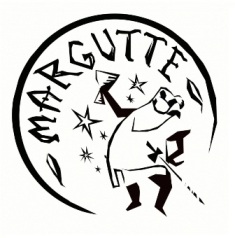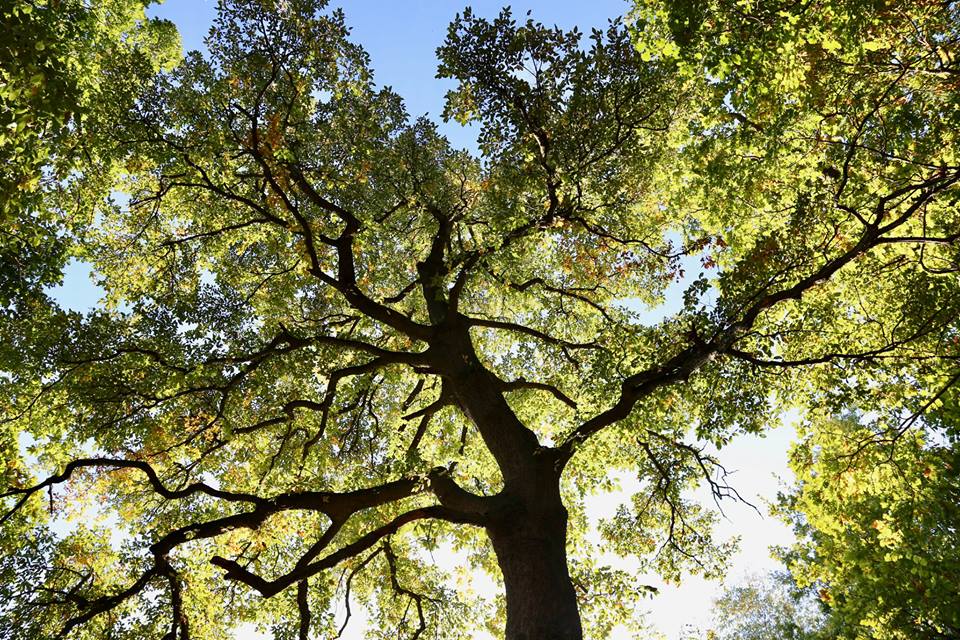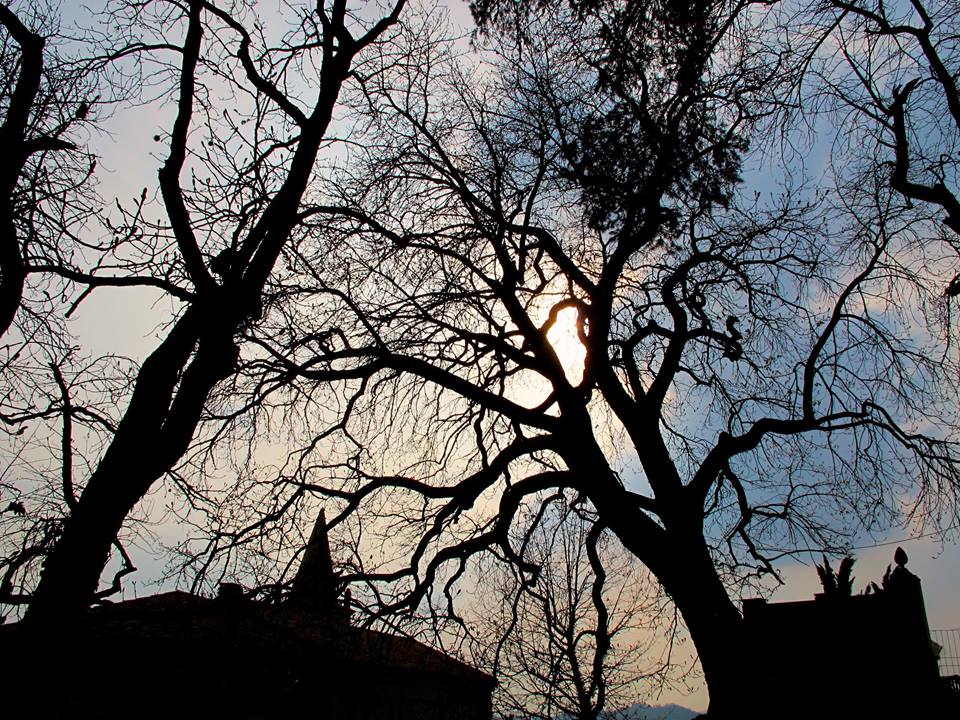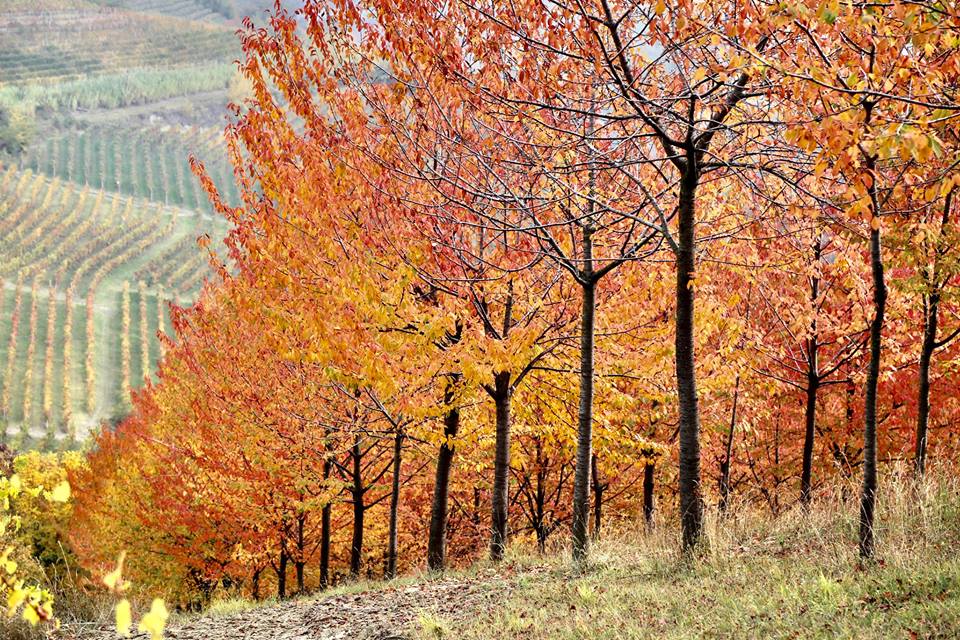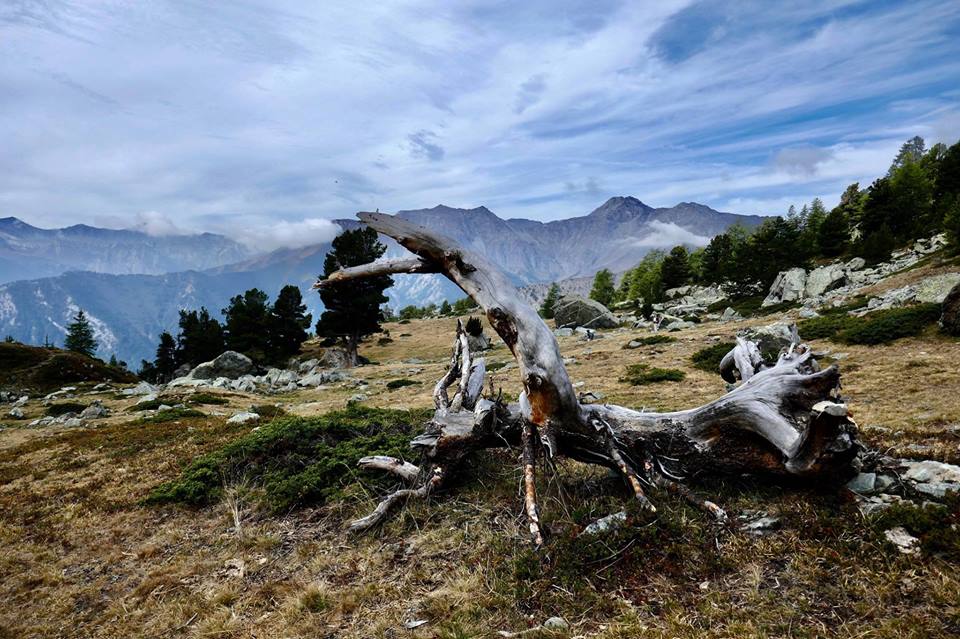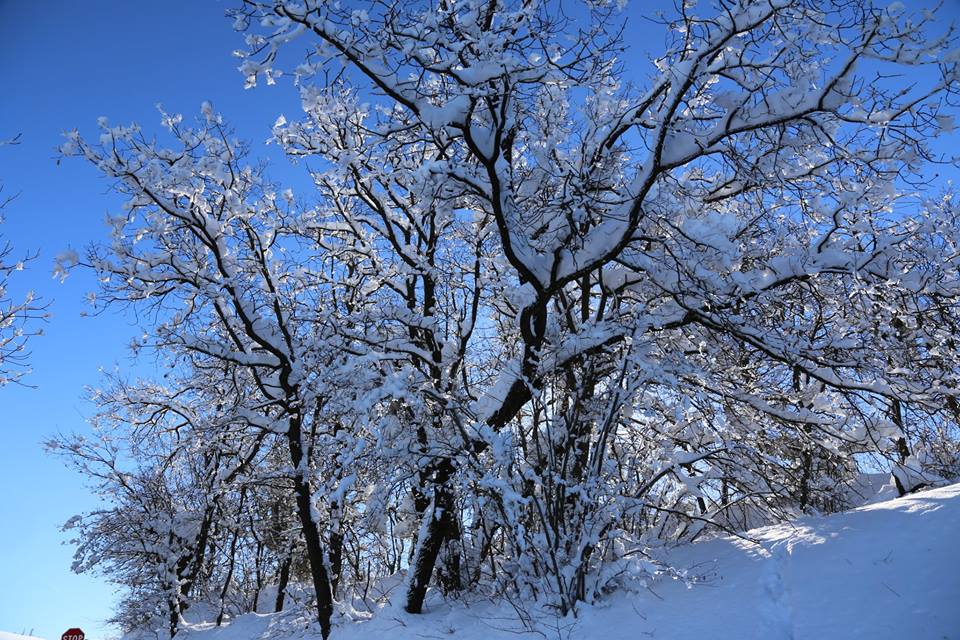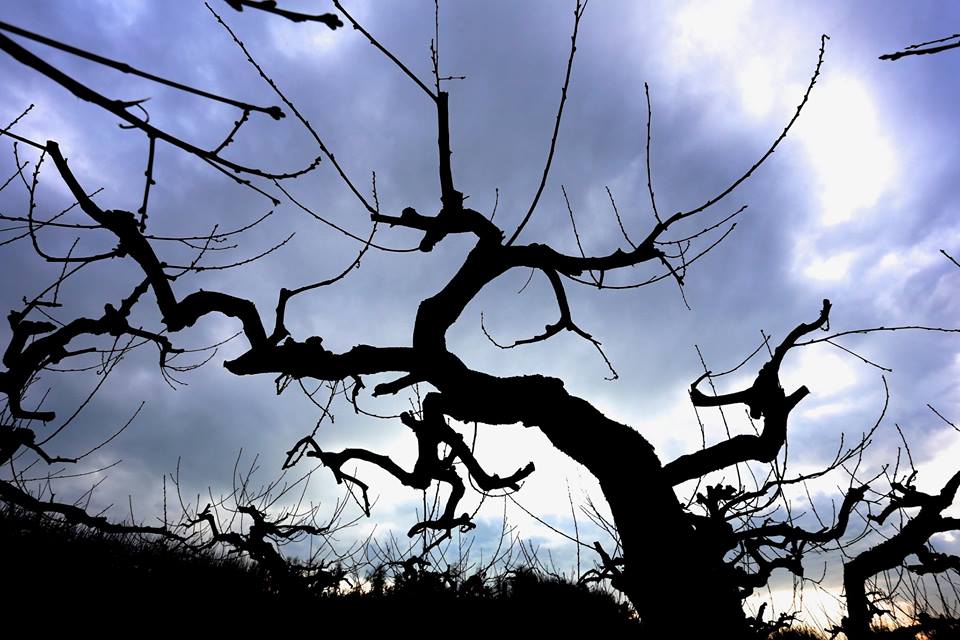RICHARD BERENGARTEN
I wrote Tree in Cambridge, 1979, at the age of thirty-five. Much of the poem’s direct inspiration came from Ann Waldman’s chant-poem, Fast Speaking Woman,[1] which she based in large part on her researches into women’s customs in traditional societies in North America and elsewhere. The first time I heard her reading the poem was on an LP record, late one evening at John James’s and Wendy Mulford’s house in Panton Street, Cambridge, in the early 1970s. I had never before heard a contemporary poem quite like it. While Ann’s voice sparkled with a quick, exuberant energy and a passionate modern intelligence, I sensed that through it I was also tracking archetypal echoes ringing down the centuries. Her delivery had a sonorous but at times edgy quality that seemed to flow, sometimes in long smooth wavelengths and sometimes in crackling bursts, directly out of shamanic practices and Neolithic rituals. Later, hearing her read the poem in person at the CCAT[2] strongly confirmed these first impressions.
Ann Waldman’s poem is a powerful and empowering celebration of womanhood, ancient and modern. While fully acknowledging the depth, strength and originality of Fast Speaking Woman, I knew immediately that I wanted to respond to it with a composition that would celebrate both female and male energies, balanced together, in a kind of harmony. A young male poet’s response, perhaps, to what I sensed was the most important poetic document to emerge from the Feminist movement of the 1970s.
Ann Waldman’s work, then, was the main poetic precursor and impetus for Tree. But there were other influences too, both direct and indirect, and among these, the most telling were several works by C. G. Jung.[3] As a student at Cambridge in the early 1960s, I had begun an avid exploration of his writings. Those I came across earliest included the ‘Foreword’ to the Wilhelm-Baynes version of the I Ching,[4] then, Psychology and Alchemy[5] and ‘Synchronicity: an Acausal Connecting Principle’.[6] In 1967, I read Septem Sermones ad Mortuos,[7] which, rightly or wrongly, at that time I found myself interpreting as a kind of post-symbolist prose-poem, believing somehow that it owed as much to Rimbaud as to Swedenborg and Nietzsche. Later, Septem Sermones provided the epigraph to Tree, in the voice of Jung’s pseudographic persona, Basilides of Alexandria.[8]
Then, in 1978 – in the year before Tree was composed – I read Jung’s essay entitled ‘The Philosophical Tree’.[9] This long explorative study begins with a selection of black and white reprints of paintings made by patients who were passing through various stages of analysis with Jung. It continues with his correlation of these images with the alchemical process or ‘opus’, as well as with many other motifs, drawn from a wide range of sources including mythology, poetry, shamanism, Neo-Platonism and the Kabbalah, as well as further strands of religious and esoteric thought. Looking back to that year of 1978, in the context of reading ‘The Philosophical Tree’ again after a period of forty years, I realised that in its overall synthesis and vision, just as in its compendious and rich detail, this essay’s influence on the composition of Tree was direct, immediate, and profound; though whether this influence occurred subliminally, through a kind of osmotic procedure, or deliberatively and consciously – or both – I can no longer say or tell. At any rate, what is now clear to me is that several distinct motifs in the essay got themselves repatterned and rewoven into the making of Tree. For example, the essay contains the idea that in form, the human being is a kind of inverted tree, with the head and trunk ‘branching out’ to the limbs:
The humanist Andrea Alciati (d. 1550) says in his Emblemata cum commentaris: “It pleased the Physicists to see man as a tree standing upside down, for what in the one is the root, trunk, and leaves, in the other is the head and the rest of the body with arms and feet.”[10]
Jung’s wide-ranging references here are to medieval Europe, Plato, the Bhagavad Gita and the Vedas. He adds:
In East and West alike, the tree symbolizes a living process as well as a process of enlightenment, which, though it may be grasped by the intellect, should not be confused with it.[11]
By applying his typical constructive method of ‘amplification’[12] – a kind of polysemic and accretive ‘resonance’, built up through analogies and correspondences; and hence, an approach that is intrinsically poetic, architectonic and musical – Jung suggests that the organic life of the tree symbolises the life cycle itself and so also embodies the “individuation process”: self-discovery, self-becoming, wisdom:
In so far as the tree symbolizes the opus and the transformation process, “tam ethice quam physice” (both morally and physically), it also signifies the life process in general. […] Since the opus is a life, death and rebirth mystery, the tree as well acquires this significance and in addition the quality of wisdom. “From man (= Anthropos) and gnosis is born the tree, which they also call gnosis.”[…] However, the cosmic associations of the tree as world-tree and world-axis take second place among the alchemists as well as in modern fantasies, because both are more concerned with the individuation process, which is no longer projected onto the cosmos.[13]
Then, in the last paragraph of the essay, in interpreting the alchemical process or “opus” as a forerunner of the “confrontation with the unconscious” during analysis, Jung recapitulates:
As well as being an irrational experience, this confrontation is a process of realization. Accordingly the alchemical opus consisted of two parts: the work in the laboratory, with all its emotional and daemonic hazards, and the scientia or theoria, the guiding principle of the opus by which its results were interpreted and given their proper place. The whole process, which today we understand as psychological development, was designated the “philosophical tree,” a “poetic” comparison that draws an apt analogy between the growth of the psyche and that of a plant [emphasis mine, RB]. For this reason it seemed to me desirable to discuss in some detail the processes which underlie both alchemy and the modern psychology of the unconscious.[14]
The theme of the “tree planted / in my core” of Tree clearly derives from Jung, as do many more of its motifs which, like his, ‘grow’ associatively, accretively, echoically.
In addition to Waldman and Jung, as Tree gradually took shape in my mind, several other books that I had been reading also had an influence on its composition, and various of their motifs got woven into it too, especially from Gareth Knight’s A Practical Guide to Qabalastic Symbolism[15] and other works on the Kabbalah; Mircea Eliade’s Shamanism;[16] J. E. Cirlot’s A Dictionary of Symbols;[17] and Rachel Levy’s little known The Gate of Horn, a magnificent study of Palaeolithic, Neolithic and classical art and myth.[18]
Finally, in March–April 1979, during my first poetry reading tour of the USA, I stayed in Berkeley with Robert (Bob) and Earlene Hass. Bob drove me out to Muir Woods. Walking with him among these ancient, enormous, majestic redwood trees was perhaps the most powerful of all influences on me in writing the poem.
For what I hope are obvious reasons, Tree has 365 lines.
The first edition of Tree was published as a chapbook by Anthony Rudolf’s Menard Press, in London, 1980.[19] Since then, the poem has appeared in several other collections in English,[20] as well as bilingually in Italian, Spanish and Galician, and in monolingual editions in German and Serbo-Croat. Its main current English publication in book form is in For the Living: Selected Poems 1965–2000.[21]
As I write this now, thirty-eight years since its composition, Tree has been translated wholly or partly into at least eleven languages. And with ten of these, TREE is now inaugurated as a multilingual project here in Margutte, edited by Silvia Pio, who is herself author of the Italian version.
Tree is published in Margutte, then, in ten versions, in alphabetical order by language, with links to websites where Chinese and Russian translations have already appeared (see A Forest of Trees) [22].
With regard to establishing a field (zone, campus, locus, dedicated area) for translation by publishing versions of one poem in many languages, the Albero Project also takes up ideas and motifs that were first explored– and are still being mapped out – in the Volta Project, in the International Literary Quarterly, edited by Peter Robertson. The introductory essay to that anthology, entitled ‘Border/Lines’ (2009), is also relevant to the current Albero Project.
Some authorial statements on poetics from the ongoing series Imagem[23] are incorporated into the Albero Project. A further contribution consists of a pair of visual poems from a series of thirty-two collaborative pieces, entitled DYAD made with the artist and graphic designer Will Hill. The Albero Project also includes the republication of Stefano Maria Casella’s explorative study of Tree, first composed by him in English, as well as his own translation of it into Italian.[24]
I think it’s worth mentioning here that in the 1980s, my first intention for a multilingual edition of Tree was that it should appear in book form. That was, of course, impractical. But the Internet offers many unparalleled and exciting possibilities for multi-media and collaborative projects of this kind, just as it does for multilingual publication. New media, especially when combined with established ones, always create new art forms; and the Internet, it seems, is especially open to fostering experimentation and encouraging co-operation – particularly, as here, between an enlightened and enthusiastic editor, poets, translators, and practitioners of art forms other than writing. This project would never have been put together so swiftly and effectively if it were not for the Internet.
Finally, the inauguration of the Albero Project has been timed to occur, fittingly, with the Festa degli alberi (Festival of Trees) LINK on October 1st, 2017 in Mondovì, the town where Silvia Pio lives, in Piedmont, North Italy.
Silvia Pio and I both hope that more versions of Tree will be made in other languages, and will gradually be added to this site. Planted in cyberspace, may this multilingual plantation of tree-poems transform gradually into a spinney, a wood, a forest …
Cambridge, September 1, 2017
(Photo: Giampiero Johnny Murialdo)
This essay can also be read in a pdf version here: The Albero Project (Richard Berengarten’s Introduction).
The versions in different languages can be found here: A Forest of Trees.
For more articles on the Festival of Trees and on The Albero Project, click on the tag.
Notes
Page references to books are to their English editions.
[1] Ann Waldman, Fast Speaking Woman. San Francisco: City Light Books, 1996 (1974). For full impact, this poem is best listened to.
[2] The Cambridgeshire College of Arts and Technology, Cambridge, now Anglia Ruskin University.
[3] Here I should add that Jung’s works, together with those of some of his leading associates and followers, have had a profound, cumulative, pervasive and ongoing influence on all aspects of my thinking and writing for more than fifty years. These associates and followers include, for example, in approximate chronological order of my reading them, Jolande Jacobi, Carl Kerenyi, Erich Neumann, J. E. Cirlot, James Hillman, Marie-Louise von Franz, and Edward F. Edinger – all major thinkers in their own right. In addition to von Franz, several writers on Jung’s theory of synchronicity have also influenced me, especially Roderick Main, David Peat, and Joseph Cambray. My wife, Dr. Melanie Rein, herself a Jungian analyst, has also contributed greatly to my understanding of Jung’s work and writings in both theory and practice, as well as the amplifications and continuations of them by others.
[4] ‘Foreword’ to The I Ching or Book of Changes, tr. from Chinese to German by Richard Wilhelm; and from his version to English by Cary F. Baynes, 1965 (London: Routledge and Kegan Paul): xxi – xxxix. Together with Kim Landers, I was introduced to this book by John Blackwood in February 1963.
[5] Psychology and Alchemy (Collected Works, vol. 12), tr. R. F. C. Hull, 1953 (London: Routledge and Kegan Paul)., I bought this book in October 1963.
[6] ‘Synchronicity: An Acausal Connecting Principle’, in C. G. Jung and W. Pauli, The Interpretation of Nature and the Psyche, tr. R. F. C. Hull, 1955 (London: Routledge and Kegan Paul): 1–146. I bought this book in June 1966. The essay was republished in C. G. Jung, The Structure and Dynamics of the Psyche (Collected Works, vol. 8), tr. R. F. C. Hull, 1960 (London: Routledge and Kegan Paul).
[7] Septem Sermones ad Mortuos [‘Seven Sermons to the Dead’], tr. H. C. Baynes, 1967 [1925] (London: Stuart and Watkins). I was given this book in November 1967.
[8] I have been able to re-track the approximate chronology of these early readings in Jung (see notes 2–6 above), mainly because in the 1960s and 1970s it was my practice to write my name in the inside front cover of each book I bought, together with the date of purchase. Basilides of Alexandria was a real person, a Gnostic philosopher who lived in the second century CE.
[9] Alchemical Studies (Collected Works, vol. 13), 1967 (tr. R. F. C. Hull. London: Routledge and Kegan Paul): 251–349.
[10] Ibid. 312, para. 412.
[11] Ibid. 313–4, para. 413.
[12] Marie-Louise von Franz defines Jung’s method of ‘amplification’ as follows: “Expansion of the dream content through personal associations and comparison of the dream images with images from mythology, religion, and so on, which resemble the dream content.” See her Dreams, 1998 (Boston and London: Shambhala; C. G. Jung Foundation): 194. Despite Jung’s deployment of the term ‘Analytic Psychology’ (or ‘Analytical Psychology’), it may be rightly pointed out that, strictly speaking, the method of ‘amplification’ is synthetic rather than analytic. What is more, this process is intrinsically poetic, musical, and magical. For an illuminating and relevant discussion of correlative thinking and ‘correlative cosmos-building’, see Steve Farmer, John B. Henderson and Michael Witzel, ‘Neurobiology, Layered Texts, and Correlative Cosmologies: A Cross-Cultural Framework for Premodern History’, 2000 (Bulletin of Far Eastern Antiquities 72): 48-90. See also Part 1 of S. A. Farmer’s Syncretism in the West: Pico’s 900 Theses (1486): The Evolution of Traditional Religious and Philosophical Systems, 1998 (Tempe, Arizona, AZ: Medieval & Renaissance Tests and Studies): 1–193.
[13] Alchemical Studies: 338–9, para. 459.
[14] ibid. 348–9, para. 482.
[15] Gareth Knight, A Practical Guide to Qabalistic Symbolism, 1965. Toddington: Helios Books (two vols.).
[16] Mircea Eliade, Shamanism: Archaic Techniques of Ecstasy, tr. from French, Willard R. Trask. Routledge and Kegan Paul, London, 1964.
[18] G. R. Levy, The Gate of Horn. London: Faber and Faber, 1968.
[19] Menard Press was aptly named after the mini-masterpiece by Jorge Luis Borges, entitled ‘Pierre Menard, autor del Quijote’(‘Pierre Menard, Author of the Quixote’).
[20] In RB’s Roots/Routes, with monotypes by Douglas Kinsey. Cleveland, OH: Cleveland State University Poetry Center, 1982: 29–37; and in RB’s Against Perfection, Norwich: King of Hearts, 1999: 31–40.
[21] RB, For the Living. Exeter: Shearsman Books, 2011: 117–130.
[22] In chronological order of composition, the complete list of translations to date (30 September 2017) is as follows. New translations are being added regularly and are not included here.
- Swedish (Träd, tr. Jan Östergren, probably between 1981 and 1985, and published here for the first time);
- Spanish (Arbol, tr. Clara Janés, published by Papeles de invierno, Madrid, 1986);
- Serbo-Croat (Дрво [Drvo], tr. Bogdana G. Bobić, first published in Književnost [‘Literature’] no. 12,
- Belgrade, 1987; not republished here);
- German (Baum, tr. Theo Breuer, private edition, Kall-Sistig, 1989);
- Chinese ( 树 [Shù], tr. Wang Ying, published in今天 [Jintian – Today], November, 2014);
- Russian (Дерево [Derevo], tr. Alexander Makarov-Krotkov, Дети Ра [Deti Ra], 2014, 9(119);
- Galician (Árbore, an incomplete bilingual version, trs. Loreto Riveiro Álvarez F. R. Lavandeira and published in Richard Berengarten’s O voar da bolboreta azul [‘In Sight of the Blue Butterfly’], Espiral, Auliga, 2015; not republished here);
- Irish (Crann, tr. Gabriel Rosenstock, 2016, published here for the first time);
- Italian (Albero, tr. Silvia Pio, published in Poesia, Milan, March 2017);
- Greek (Δέντρο [Dentro], tr. Paschalis Nikolaou, 2017, published here for the first time);
- Hebrew ( עץ [Echts], tr. Miriam Neiger-Fleischmann, 2017, published here for the first time).
[24] Stefano Maria Casella, ‘Roots and Rings: Under the Shade of Richard Berengarten’s ‘Tree’, in The Companion to Richard Berengarten, Shearsman Books, 2016:164–174.
